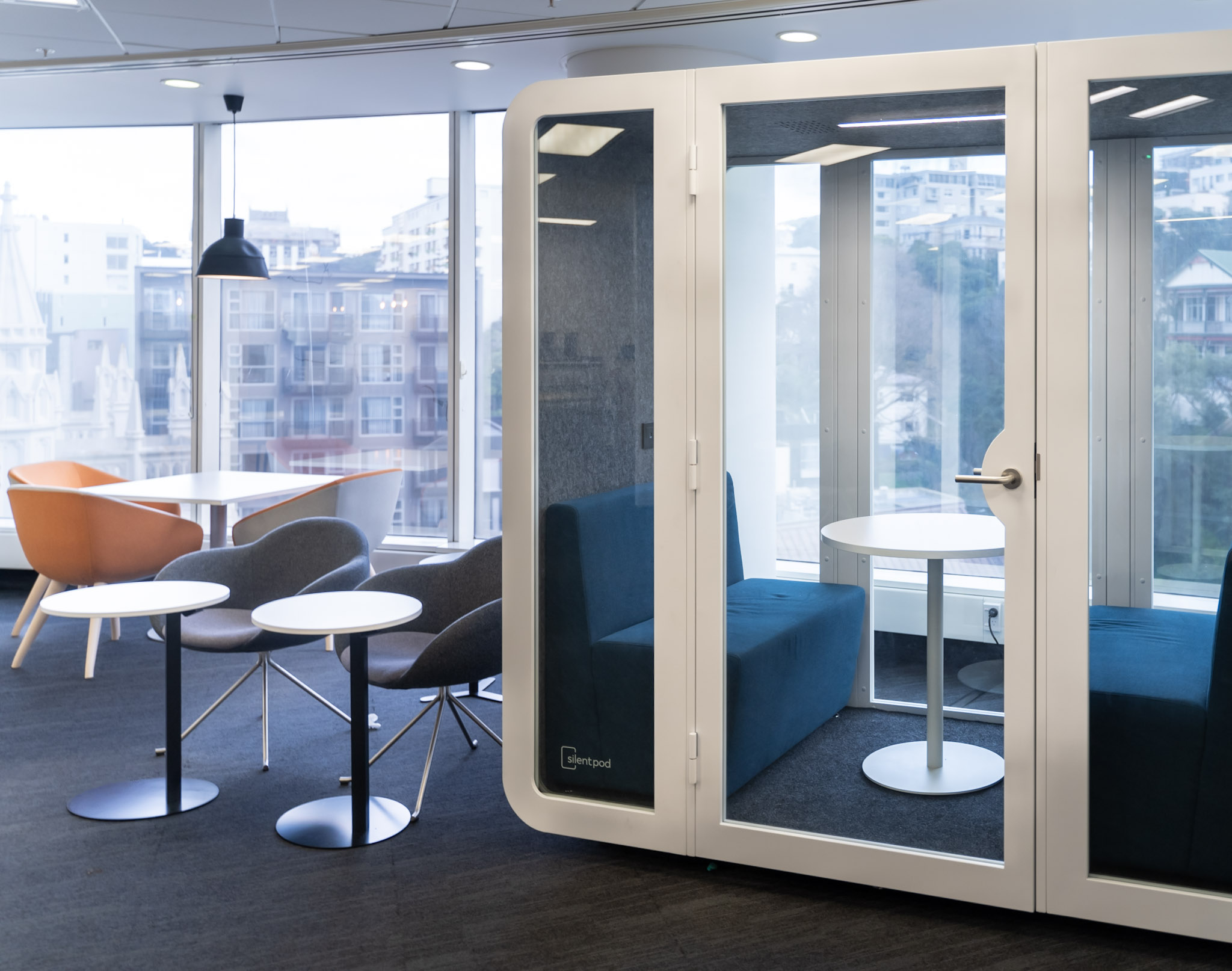You know that feeling, when the noise starts small. The soft click of a keyboard nearby. A ping from someone’s phone. Two Zoom calls overlapping, voices bouncing from wall to wall.
At first, it’s manageable, the background noise. But after a while, it starts to pile up. You lose your train of thought mid-sentence. You reread the same email three times. You start avoiding conversations, not because you don’t care, but because your brain’s already full.
And the worst part? It doesn’t end at 5pm. It follows you home.
You’re cooking dinner, but your mind is still back in that meeting. You’re trying to relax, but something’s buzzing in the back of your head.
You can’t quite switch off, because you only half switched on.
That constant low-level noise makes you feel scattered and distant from your own thoughts.
And for a lot of people, this is normal.
But it doesn’t have to be.
Quiet as Infrastructure
More and more companies are starting to realize that office perks are nice. But they don’t create peace of mind.
Burnout’s become a buzzword that we’re throwing solutions at it.
Meditation apps. Wellness challenges. Team bonding.
Some companies are investing in AI to take tasks off people’s plates, thinking that time-saving alone will reduce stress.
But you can’t schedule your way out of overwhelm, or automate yourself into clarity. And no amount of yoga or fruit bowls will fix the deeper issue if your environment is constantly overstimulating.
We’ve designed our offices for visibility and efficiency, but our brains haven’t evolved to thrive in open-plan noise. We’re still wired for focused attention and moments of pause.
Quiet is a necessity.
The Science is Clear
Studies show that high workplace noise increases stress, drains focus, and contributes to mental and physical fatigue. In contrast, quiet environments support decision-making, clarity, and emotional recovery.
And it’s not just about general noise, it’s about privacy.
A 2023 study across more than 600 office buildings in the US, Canada, and Australia found that sound privacy was the number one complaint in the modern work environment. People weren’t just bothered by loud environments, they were specifically frustrated by overheard conversations, lack of speech privacy, and phone noise.
Staff in open-plan offices without access to an enclosed space were almost twice as likely to report dissatisfaction with their workspace compared to those who had access to a private space.
In other words: what people crave isn’t just silence. It’s the ability to control when and how they engage with noise.
It’s about having boundaries. A space they can step into when they need to focus, or just get a moment to themselves.
For businesses, that’s more than a comfort issue, it’s a performance issue.
When employees feel constantly exposed, they don’t just lose focus, they also lose trust, creativity, and energy. Over time, that adds up in the form of missed details, more sick days, and higher turnover.
But when you reduce external noise, you also reduce internal noise. what many of us know as overthinking, anxiety, or burnout.
Pods Aren’t Just Walls, They’re Signals
So… what can we do about all this?
Do we knock down the office walls and rebuild from scratch? Do we all invest in the best noise-cancelling headphones and hope for the best?
Do we just accept that modern work comes with constant noise and stress?
Thankfully, we have a simple solution.
Soundproof office pods are a small change with an outsized impact.
These self-contained rooms don’t require renovation or a total rethink of your workspace. They slot in seamlessly, offering pockets of peace inside busy environments.
They’re not about isolation. They’re about creating intentional space to focus and reset. To take a call without whispering or worrying about privacy.
Even better? Pods do more than reduce noise. They signal to your team, and to future talent, that this is a workplace that cares about mental wellbeing.
Soundproof office pods are a small addition that make a huge difference.
How Teams Are Using Them
Silent Pod was built to provide practical, quiet spaces within modern work environments.
Teams use them in a range of ways:
- For focused, distraction-free work
- One-on-one meetings and private conversations
- Therapy sessions, coaching, and HR check-ins
- A quiet reset before high-pressure moments or presentations
What these use cases have in common is simple:
People work better when they have control over their environment.
When noise, interruptions, or lack of privacy get in the way, performance suffers.
Pods offer a straightforward, effective way to reduce those friction points, so people can stay focused, work smarter, and feel more in control of their day.
Silence Isn’t Empty, It’s a Strategic Asset
Silent pods won’t solve every workplace challenge.
But they represent a shift in how organisations think about productivity, wellbeing, and space.
We’re no longer pushing through distractions. It’s about creating environments where we can think clearly and perform at our best.
If your team is feeling stretched, distracted, or consistently low on energy, the question might not be:
“How do we help them do more?”
But rather:
“What’s getting in the way of their best work?”
More often than not, it’s noise. And the solution starts with something simple:
Giving people the option to step into quiet, when they need it most.
If you’re curious, you can check out our range of Silent Pods to see what could work in your space.
Otherwise feel free to reach out directly.

